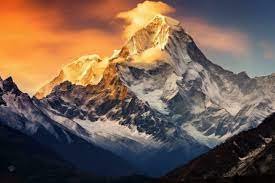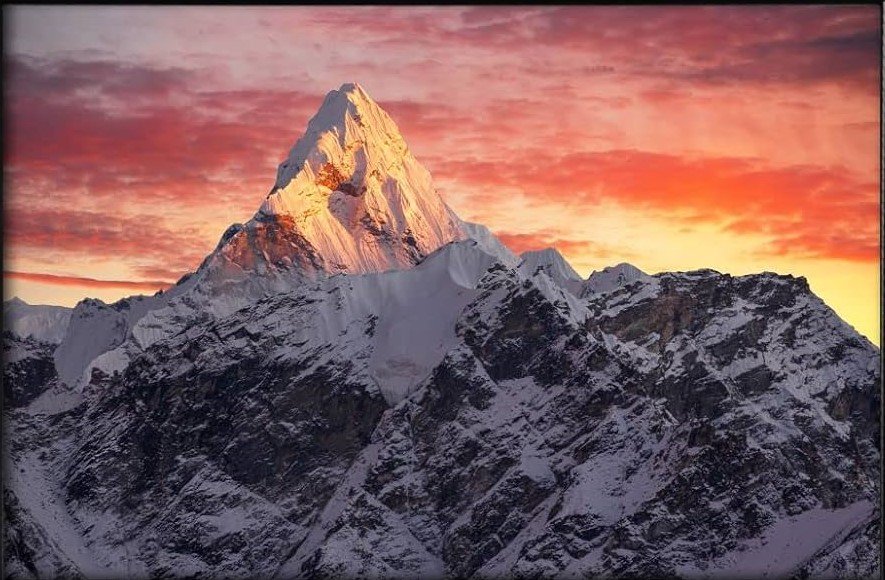01.Route Overview: Exploring the Scenic Trails of the Helambu Region:
The Helambu Trek is a popular trekking route in the Langtang region of Nepal, offering trekkers a captivating journey through picturesque landscapes, traditional villages, and Buddhist monasteries. The trek typically begins from Sundarijal or Melamchi Pul Bazaar, located on the outskirts of Kathmandu, and winds its way through the Helambu Valley before concluding in the town of Melamchi.
a.Starting Point: The trek can start from either Sundarijal or Melamchi Pul Bazaar, depending on the chosen itinerary and trekking preferences. Sundarijal, located approximately 1 hour’s drive from Kathmandu, serves as the gateway to the Shivapuri Nagarjun National Park and offers trekkers a scenic ascent through lush forests and waterfalls. Alternatively, trekkers can opt to start from Melamchi Pul Bazaar, a bustling market town situated in the Melamchi Valley, which provides access to the lower sections of the Helambu region.

b.Key Landmarks: Along the Helambu Trek route, trekkers encounter a variety of key landmarks and attractions that showcase the natural and cultural beauty of the region. Highlights include:
– **Chisapani**: A tranquil hill station situated at an altitude of approximately 2,165 meters (7,103 feet), offering stunning panoramic views of the Langtang Himalayan range.
– **Gosainkunda**: A sacred alpine lake nestled at an altitude of approximately 4,380 meters (14,370 feet), revered by both Hindu and Buddhist pilgrims for its religious significance.
– **Sherpa and Tamang Villages**: Throughout the trek, trekkers pass through traditional Sherpa and Tamang villages, such as Kutumsang, Tharepati, and Tarkeghyang, where they can experience the unique culture, hospitality, and way of life of the local communities.
c.Terrain and Trail Conditions: The Helambu Trek features a mix of gentle ascents, descents, and flat stretches, making it suitable for trekkers of all skill levels. The trail meanders through dense forests, rhododendron groves, and terraced fields, offering trekkers opportunities to immerse themselves in the natural beauty of the landscape. Trekkers should be prepared for variable weather conditions, including rain, snow, and cold temperatures, especially at higher elevations.
Overall, the Helambu Trek promises an unforgettable adventure through some of the most stunning landscapes in the Langtang region, with opportunities for cultural immersion, scenic beauty, and spiritual exploration along the way. Whether starting from Sundarijal or Melamchi Pul Bazaar, trekkers are sure to be captivated by the charm and allure of the Helambu Valley and its surrounding mountains.
02.Trekking Difficulty and Terrain: Navigating the Varied Landscapes of the Helambu Region:
The Helambu Trek offers trekkers a moderate-level adventure through diverse landscapes, from lush forests and terraced fields to alpine meadows and high mountain passes. Understanding the trekking difficulty and terrain is essential for adequately preparing for the journey and ensuring a safe and enjoyable experience.
a.Moderate Trekking Difficulty: The Helambu Trek is generally considered to be of moderate difficulty, suitable for trekkers with a reasonable level of fitness and hiking experience. The trail involves a combination of uphill and downhill sections, with some steep ascents and descents, particularly as trekkers ascend to higher elevations. While the trek does not require technical climbing skills, trekkers should be prepared for long days of hiking, ranging from 5 to 7 hours on average, depending on the daily itinerary and pace.

b.Varied Terrain: One of the highlights of the Helambu Trek is the diversity of terrain encountered along the route. Trekkers traverse a variety of landscapes, including dense forests of rhododendron, oak, and pine trees, terraced fields cultivated by local farmers, and alpine meadows adorned with colorful wildflowers. As the trek ascends to higher elevations, the terrain becomes more rugged and rocky, with occasional sections of exposed trails and narrow ridgelines. Trekkers should be prepared for variable trail conditions, including uneven surfaces, rocky paths, and occasional stream crossings.
c.Altitude Considerations: While the maximum altitude reached on the Helambu Trek is relatively moderate compared to other treks in Nepal, such as the Everest Base Camp Trek or Annapurna Circuit Trek, trekkers still need to be mindful of altitude-related challenges. The highest point on the trek is typically the Laurebina Pass, situated at an altitude of approximately 4,610 meters (15,125 feet). Trekkers should acclimatize gradually by ascending at a steady pace, staying hydrated, and allowing time for rest and adaptation. It’s essential to recognize the symptoms of altitude sickness and descend immediately if they occur.
Overall, the Helambu Trek offers trekkers a rewarding and memorable journey through some of the most stunning landscapes in the Langtang region of Nepal. With its moderate trekking difficulty and varied terrain, the trek promises an immersive experience in nature’s beauty, cultural heritage, and mountain hospitality, making it a must-do adventure for outdoor enthusiasts seeking to explore the Himalayas.
03.Cultural and Natural Highlights: Immersing in the Rich Heritage and Breathtaking Landscapes of the Helambu Region:
The Helambu Trek is not only renowned for its stunning natural beauty but also for its rich cultural heritage and diverse ecosystems. Trekkers embarking on this journey have the opportunity to immerse themselves in the unique blend of cultural traditions and breathtaking landscapes that define the Helambu region.
a.Cultural Immersion: Throughout the trek, trekkers encounter several cultural highlights that offer insights into the local way of life and religious practices. The Helambu region is inhabited predominantly by Sherpa and Tamang communities, each with its own distinct culture and traditions. Trekkers have the opportunity to visit traditional villages, interact with local residents, and witness age-old customs and rituals firsthand. Highlights include visits to Buddhist monasteries, where trekkers can observe monks chanting prayers and spinning prayer wheels, as well as participation in local festivals and celebrations, which showcase the vibrant cultural tapestry of the region.

b.Natural Beauty: The Helambu Trek traverses a variety of ecosystems, from dense forests and cascading waterfalls to alpine meadows and snow-capped peaks. Trekkers are treated to breathtaking views of the Langtang Himalayan range, including peaks such as Langtang Lirung, Dorje Lakpa, and Gaurishankar. The trail passes through Shivapuri Nagarjun National Park, home to diverse flora and fauna, including rhododendron forests, oak trees, and Himalayan wildlife such as langur monkeys, deer, and various bird species. Trekkers can also enjoy the tranquil beauty of alpine lakes, such as Gosainkunda, a sacred pilgrimage site for Hindus and Buddhists alike, nestled amidst the towering mountains.
c.Traditional Villages: Along the trekking route, trekkers have the opportunity to visit traditional Sherpa and Tamang villages, where they can experience the warmth and hospitality of the local communities. Villages such as Kutumsang, Tharepati, and Tarkeghyang offer glimpses into rural life in the Himalayas, with their traditional stone houses, terraced fields, and intricate woodcarvings. Trekkers can stay in local teahouses or homestays, enjoying home-cooked meals and cultural exchanges with their hosts, who are eager to share stories and traditions passed down through generations.
d.Cultural and Natural Conservation: The Helambu region is not only rich in cultural and natural heritage but also committed to conservation efforts aimed at preserving its unique environment and traditions. Local communities actively participate in sustainable tourism practices, such as eco-friendly lodges, waste management initiatives, and reforestation projects, ensuring that future generations can continue to enjoy the beauty and bounty of the Helambu region.
Overall, the Helambu Trek offers trekkers a truly immersive and unforgettable experience, allowing them to connect with the cultural richness and natural splendor of the Himalayas in a meaningful and profound way. Whether marveling at snow-capped peaks, sharing stories with local villagers, or meditating in ancient monasteries, trekkers are sure to be inspired by the timeless beauty and enduring spirit of the Helambu region.
04.Logistics and Practical Information: Essential Tips for a Successful Helambu Trek:
Embarking on the Helambu Trek requires careful planning and consideration of various logistical factors to ensure a smooth and enjoyable journey. From permits and accommodations to transportation and safety precautions, here are some essential logistics and practical information to keep in mind before setting off on the trek:
a.Permits and Fees: Trekkers must obtain the necessary permits and pay applicable fees before starting the Helambu Trek. The trek passes through Shivapuri Nagarjun National Park, and trekkers are required to obtain a TIMS (Trekkers’ Information Management System) card and a national park entry permit. These permits can be obtained from the Nepal Tourism Board or authorized trekking agencies in Kathmandu or Pokhara. Additionally, there may be conservation area entry fees or local municipality taxes, depending on the specific route and itinerary chosen.
b.Transportation: The starting point of the Helambu Trek can vary depending on the chosen itinerary. Trekkers can reach Sundarijal or Melamchi Pul Bazaar, the two common starting points, by public bus or private vehicle from Kathmandu. From there, the trekking route follows well-marked trails through the Helambu region, with options for local transportation available at certain points along the way. It’s advisable to arrange transportation in advance and confirm schedules to ensure a smooth journey to and from the trekking trail.
c.Accommodations and Dining: The Helambu region offers a range of accommodation options for trekkers, including teahouses, guesthouses, and homestays operated by local families. These accommodations typically provide basic amenities such as beds, blankets, and shared bathroom facilities. Trekkers can also enjoy authentic Nepali meals at teahouses or local eateries along the trail, with options for dal bhat (rice and lentil curry), noodles, soups, and other hearty dishes. It’s recommended to carry some cash in Nepalese rupees for accommodation, meals, and other incidental expenses, as ATM facilities may be limited in remote areas.
d.Safety Precautions: Trekkers should prioritize safety while undertaking the Helambu Trek, especially when hiking in mountainous terrain and high altitudes. It’s essential to stay hydrated, protect against sun exposure, and dress in layers to adjust to changing weather conditions. Trekkers should also be aware of signs of altitude sickness, such as headache, dizziness, and nausea, and descend to lower elevations if symptoms persist or worsen. Carrying a first aid kit, water purification tablets, and emergency contact information is advisable, as well as informing someone about the trekking itinerary and expected return date.
e.Environmental Considerations: Responsible trekking practices are essential for preserving the natural beauty and fragile ecosystems of the Helambu region. Trekkers should adhere to Leave No Trace principles, including packing out trash, minimizing campfire impact, and respecting wildlife and vegetation. It’s also important to support sustainable tourism initiatives and local conservation efforts by choosing eco-friendly accommodations, purchasing locally sourced products, and minimizing environmental impact wherever possible.
By taking these logistics and practical considerations into account, trekkers can better prepare for the Helambu Trek and ensure a safe, enjoyable, and responsible adventure through the stunning landscapes and cultural heritage of the Himalayas.
